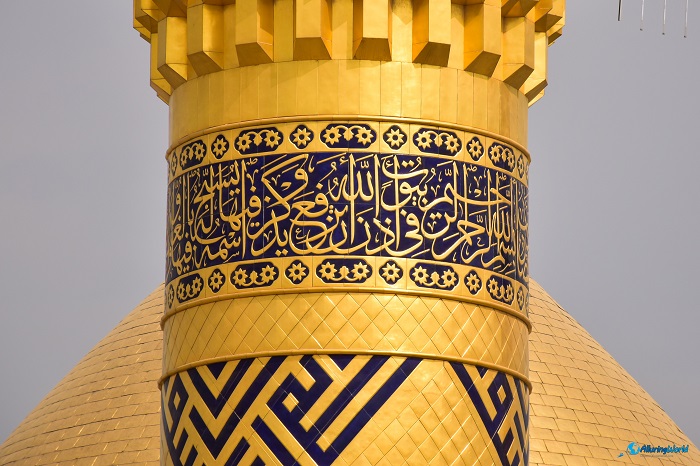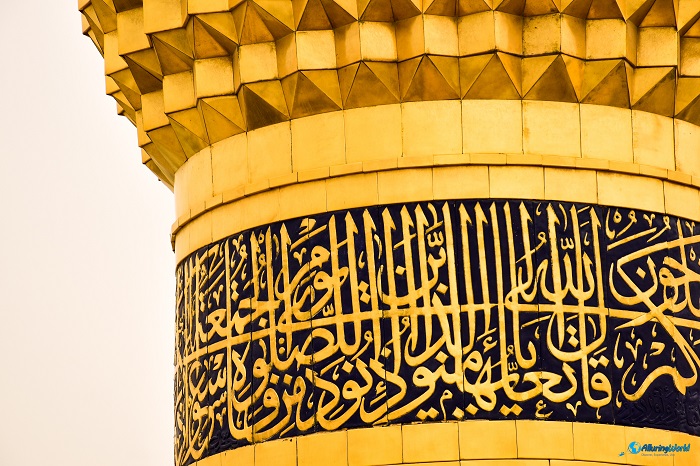The Imam Husayn Shrine is a historic mosque and burial site of the third Imam of Shia Islam, Husayn ibn Ali, which is located in the city of Karbala, the capital of the Karbala Governorate, within the central part of the Republic of Iraq. As the shrine stands as a testament to the rich history and cultural significance of the region, the origins of the Imam Husayn Shrine can be traced back to the year 680 CE when it was officially built.

Throughout the centuries this grand edifice gained significant importance, and even to this day, it holds immense religious and historical value, drawing countless pilgrims and visitors from around the world. Since it was erected to commemorate the martyrdom of Imam Husayn ibn Ali, who was the grandson of the Prophet Muhammad, it resembles the courage and great sacrifice that the Imam showed during the Battle of Karbala.

This battle was fought on 10 October 680 between the army of the second Umayyad Caliph Yazid I and a small army led by Husayn ibn Ali, as a matter of fact, Imam Husayn, alongside his family and a small group of loyal followers, valiantly faced the overwhelmingly larger opponent force, sacrificing their lives in the pursuit of justice and truth.
Because the construction of the shrine involved a meticulous process, skilled artisans and architects labored diligently to erect this magnificent complex that would reflect the importance of martyrdom and serve as a site of veneration for the faithful. In the interest of building a structure that would last for quite a long time, materials such as stone, marble, and gold were employed, ensuring the shrine’s grandeur and enduring quality.

The shrine’s structure embodies a harmonious blend of intricate Islamic and Persian architectural styles, showcasing a rich tapestry of design elements where the exterior itself is a sight to behold, featuring a grand and imposing façade.

Characterized by majestic domes, minarets, and intricately carved calligraphy adorning its walls, the domes are covered in shimmering gold, while the minarets, with their elegant and slender profiles, serve as beacons, guiding pilgrims to this sacred place.

The entrance features a vast courtyard that exudes a serene and reverent ambiance adorned with lush greenery, vibrant flowers, and ornate fountains, offering a peaceful oasis for contemplation and prayer. Interestingly enough, the cool marble flooring provides respite from the scorching sun, inviting devotees to rest and reflect.
Moving further, in the central area the shrine contains the magnificent tomb of Imam Husayn, which is a masterpiece of craftsmanship, meticulously embellished with intricate patterns, delicate calligraphy, and precious stones. The interior walls are adorned with exquisite tiles, showcasing a vibrant array of colors and motifs that create a visually captivating atmosphere.

The honorable task of building this important shrine was undertaken by devoted followers of the Ahl al-Bayt, the family of Prophet Muhammad, and it was primarily overseen by the Abbasid Caliphate, which recognized the significance of commemorating this important event and preserving the legacy of Imam Husayn.

In addition, the caliphs sought to establish a shrine that would serve as a beacon of remembrance, inspiring generations to honor the ideals of sacrifice, justice, and resistance. Linked to this place is a legend that within the sacred confines of the Imam Husayn Shrine lies a miraculous well which is known as the Zemzem.

According to the tale, when Imam Husayn’s loyal companion, Abbas ibn Ali, suffered from severe thirst during the Battle of Karbala, he was guided to this mystical well by a divine intervention, which waters are thought to be miraculous and possess spiritual healing properties.

Nowadays the Imam Husayn Shrine holds unparalleled importance in the Islamic world, as it serves as a significant pilgrimage site for millions of Muslims, who embark on arduous journeys to pay homage to Imam Husayn and his steadfastness in the face of tyranny.

The shrine furthermore serves as a center for religious and intellectual activities, fostering an atmosphere of learning, devotion, and unity among diverse communities.

In conclusion, the Imam Husayn Shrine in Karbala stands as a monumental testament to the martyrdom of Imam Husayn and his companions, and with meticulous care and devotion, this grand structure serves as a symbol of resistance, justice, and sacrifice, drawing millions of pilgrims and visitors from all corners of the world to honor its historical and spiritual significance.







